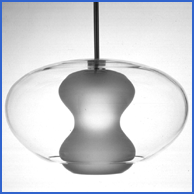Award-winning industrial designer Karim Rashid, whose work appears in museum collections throughout the world, creates products and furniture for the likes of Estee Lauder, Tommy Hilfiger, Citibank, and Sony.
Karim Rashid's current projects include new Totem boutiques, Emporio Armani Boutiques, several restaurants in NYC and Philadelphia, interiors for the MediaTech building in Sendai for Toyo Ito, hotels in Miami and Athens, and gallery installations. He also designs products, cosmetics, and fashion accessories for various international clients such as Nambe, Umbra, Issey Miyake, Pure Design, Zeritalia, Unitone, Estee Lauder, Tommy Hilfiger, Giorgio Armani, Sony, Zanotta, Yahoo, Citibank, Nienkamper, and others.
The Philadelphia Museum of Art calls him one of a handful of young designers whose work will have a lasting influence on design in the 21st century. Mr. Rashid has won many awards including the 1999 George Nelson Award and the Silver IDEA Award for the Oh Chair in the 1999 Industrial Design Excellence Awards, the Brooklyn Museum of Art Designer of the Year 1998, the 1998 and 1999 Design Effectiveness Awards and the ID Magazine Annual Review Design Distinction in 1998. His work has been exhibited and is in permanent collections in numerous museums, including the Philadelphia Museum of Art and the San Francisco Museum of Modern Art.
The so-called "sensual minimalism" that characterizes his style - the feminine curve of a wooden lamp stand or the optical pleasure embedded in a glass stacking table - is as evident in his polypropylene Umbra waste basket as it is in his award-winning line of sleek alloy products for Nambe, in the Black & Decker workaday snow shovel or his telephone for Sum Moon Star. His particular brand of modernist elegance has generated international buzz, as well as the unofficial title of the design world's hippest jack-of-all-trades.
"Form is much more seductive when the product's aesthetics are experiential, and not just visual," Rashid says, declaring the importance of engaging the senses. "Objects have to blur experience with form so that they are inseparable. It means retooling the stuff we live with to suit the way we really live. It means that if we slouch in chairs, we make chairs that let us."
Rashid is joined by Matthew Drutt, Associate Curator for Research at the Solomon R. Guggenheim Museum. Responsible for collection-based projects and publications and the lead curatorial advisor on photography and new media initiatives, Drutt has organized numerous exhibitions at the Guggenheim, including the 1998 exhibit Art of the Motorcycle and Amazons of the Avant-Garde. He established the Guggenheim's web site in 1995, and is currently overseeing the development of the Guggenheim Virtual Museum.
Cosponsored by the SEI Center for Advanced Studies in Management, The Wharton School.



